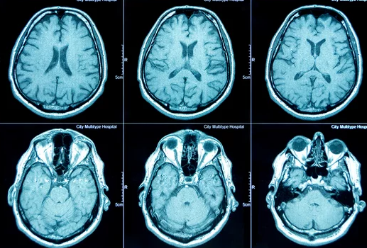Magnetic Resonance Imaging (MRI) has been one of the most transformative tools in modern medicine, offering detailed insights into the human body without the risks of ionizing radiation. Yet, as MRIs become more advanced and generate increasingly complex datasets, clinicians face a growing challenge—how to interpret vast amounts of imaging data quickly, accurately, and effectively. This is where smart MRI viewers are making a profound difference, transforming raw scans into actionable insights through intelligent visualization and analysis tools.
The Challenge of MRI Data Interpretation
MRI technology captures detailed images across multiple planes, producing hundreds or even thousands of slices in a single scan. While this depth of information is invaluable, it can also be time-consuming and cognitively demanding for radiologists and specialists to review. Traditional imaging viewers provide static 2D images that require manual navigation, making it easy to miss subtle patterns or anomalies.
Smart MRI viewers aim to solve this problem by integrating artificial intelligence, advanced rendering techniques, and interactive features that help clinicians interpret data faster and more accurately.
What Are Smart MRI Viewers?
Smart MRI viewers are next-generation medical imaging platforms that go beyond basic display functions. They are designed to assist clinicians in:
- Highlighting anomalies using AI-based detection algorithms.
- Reconstructing 3D and 4D models from 2D slices for better spatial understanding.
- Integrating multimodal imaging data (MRI, CT, PET) for a comprehensive view.
- Providing customizable layouts and measurement tools to suit different specialties.
- Automating certain interpretation steps to save time and reduce fatigue.
Core Features of Smart MRI Viewers
1. AI-Powered Anomaly Detection
Advanced algorithms analyze scans to flag potential issues such as lesions, tumors, or degenerative changes. These automated alerts give clinicians a “second set of eyes” to reduce oversight.
2. Multi-Dimensional Visualization
3D reconstructions allow doctors to see the anatomy from any angle, while 4D visualization shows changes over time—critical for tracking disease progression or treatment response.
3. Automated Segmentation
Smart viewers can separate tissues, organs, and pathological areas automatically, helping to isolate problem areas without manual outlining.
4. Real-Time Collaboration Tools
Some systems support remote, secure collaboration, allowing multiple specialists to review and annotate the same scans simultaneously, regardless of location.
5. Personalized View Settings
Clinicians can customize contrast levels, color maps, and slice arrangements to match their diagnostic preferences.
Benefits for Clinicians and Patients
Increased Diagnostic Accuracy
AI assistance helps reduce human error by detecting patterns too subtle for the naked eye.
Time Efficiency
Automated sorting, segmentation, and highlighting reduce review time, allowing doctors to focus on complex decision-making.
Enhanced Communication
Interactive visuals make it easier for doctors to explain findings to patients and collaborate with colleagues.
Better Treatment Planning
With detailed 3D models and integrated imaging data, surgeons can plan procedures with greater precision.
Use Cases Across Specialties
- Neurology – Identifying early signs of multiple sclerosis or stroke.
- Oncology – Monitoring tumor growth and treatment effects.
- Orthopedics – Assessing joint damage and post-surgical recovery.
- Cardiology – Evaluating heart function and blood flow abnormalities.
- Pediatrics – Providing safe, radiation-free diagnostics for developing bodies.
Challenges and Considerations
While smart MRI viewers offer significant benefits, their adoption comes with some challenges:
- Cost of Implementation – Advanced AI-powered systems can be expensive.
- Data Security – Patient privacy must be protected through strict compliance with regulations like HIPAA or GDPR.
- Training Requirements – Clinicians need training to use the new features effectively.
- Integration with Hospital Systems – Ensuring compatibility with existing PACS and EHR systems is essential.
The Future of Smart MRI Viewing
As technology evolves, we can expect future smart MRI viewers to feature:
- Augmented Reality Integration – Overlaying MRI data directly onto the patient during surgery.
- Cloud-Based AI Analysis – Allowing hospitals with fewer resources to access high-end diagnostic tools remotely.
- Fully Automated Reporting – Generating preliminary reports with AI-suggested diagnoses for review.
- Patient-Accessible Portals – Simplified, interactive MRI visualizations for patient education.
Conclusion
Smart MRI viewers represent the next leap forward in medical imaging interpretation. By combining AI-driven analysis, multi-dimensional visualization, and real-time collaboration, they empower clinicians to make faster, more accurate decisions while improving patient communication.
In an era where healthcare demands both precision and efficiency, these tools are not just an upgrade—they are a necessity for the future of radiology and diagnostic medicine.
If you want, I can now create SEO keywords, a meta title, and a meta description so this article is optimized for ranking in the medical imaging technology niche.
Also Read :
